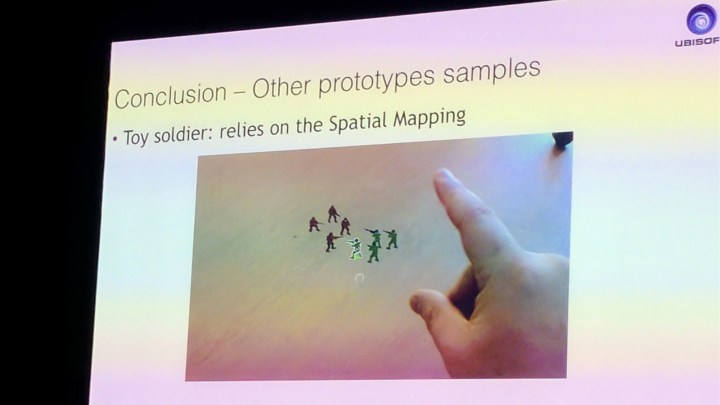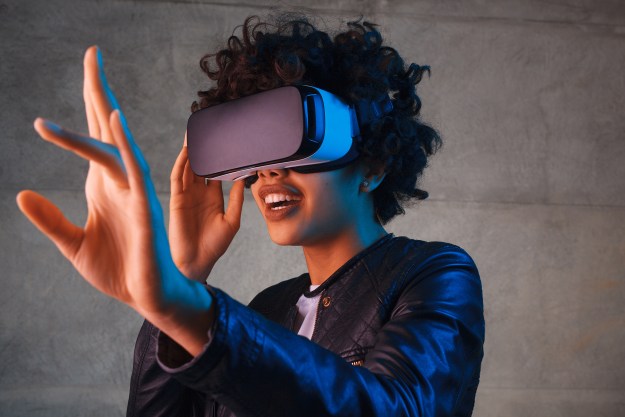
Although the likes of HTC’s head of Vive, Dan O’Brien believe that augmented reality in the mainstream is still a few years away, that doesn’t mean the industry isn’t slowly heading in that direction. Microsoft has been at the forefront of its development with its Hololens headset and Ubisoft is at least conducting trials of the kinds of experiences it could craft for a new medium of gaming.
Using what it describes as “spatial mapping,” Ubisoft’s prototype games have in-game characters react to the environment around them, utilizing the surroundings as part of the gameplay. One has toy soldiers battling it out on a wooden floor, while another has the player interacting with a bunch of ‘Rabbids’ as they fire rockets at one another (thanks VRFocus).
In the former of those experiences, the ‘player’ would be able to interact with the soldiers, picking up and placing them at will, and then letting them tear into one another with their cute, little plastic guns. The Rabbid’s game is a little more straightforward, but in images from the show, it does showcase a more complicated environment with wires and wheeled feet providing terrain for the cartoonish battles.
Although these titles are still in the very early stages of development and are unlikely to become fully fledged games in their own right, their existence suggests Ubisoft is taking AR gaming relatively seriously. Working together with Microsoft to create them could give Ubisoft a real head start on the competition as commercial AR hardware becomes a reality.
With a $3,000 price point, the Hololens is unlikely to be the AR headset of the future, though it has provided a strong platform for a number of developers. Along with letting artists play around with hidden, digital graffiti, it’s helping try out a new dimension of gaming that is as far removed from virtual reality as it is traditional gaming.
Editors' Recommendations
- Apple’s Vision Pro could get this incredible gaming upgrade
- You won’t be taking Microsoft’s HoloLens 3 into the metaverse
- Apple’s mixed reality headset could be as powerful as the MacBook Pro
- Apple’s mixed reality headset could be half the weight of other headsets
- Microsoft unveils Mesh, and with James Cameron, dives into mixed reality




